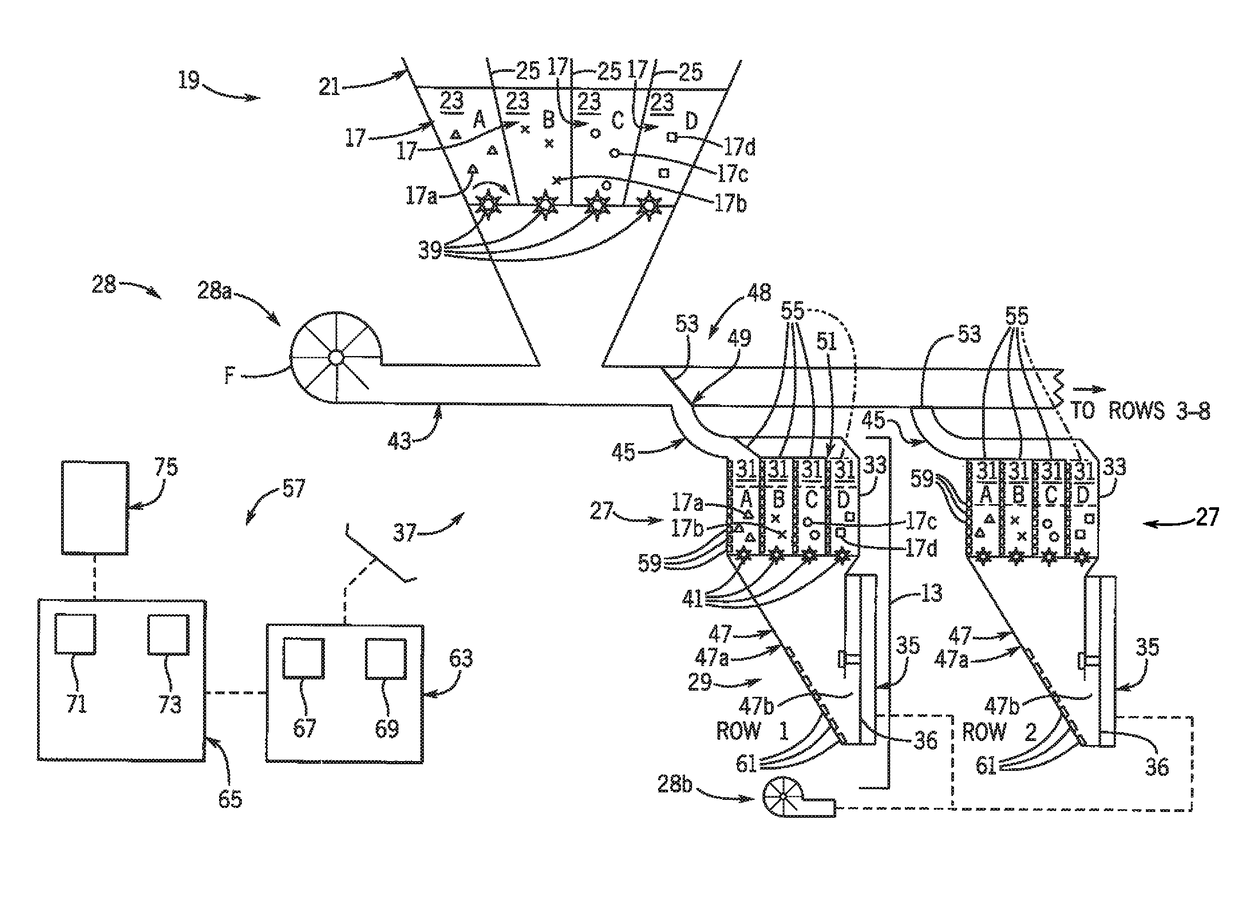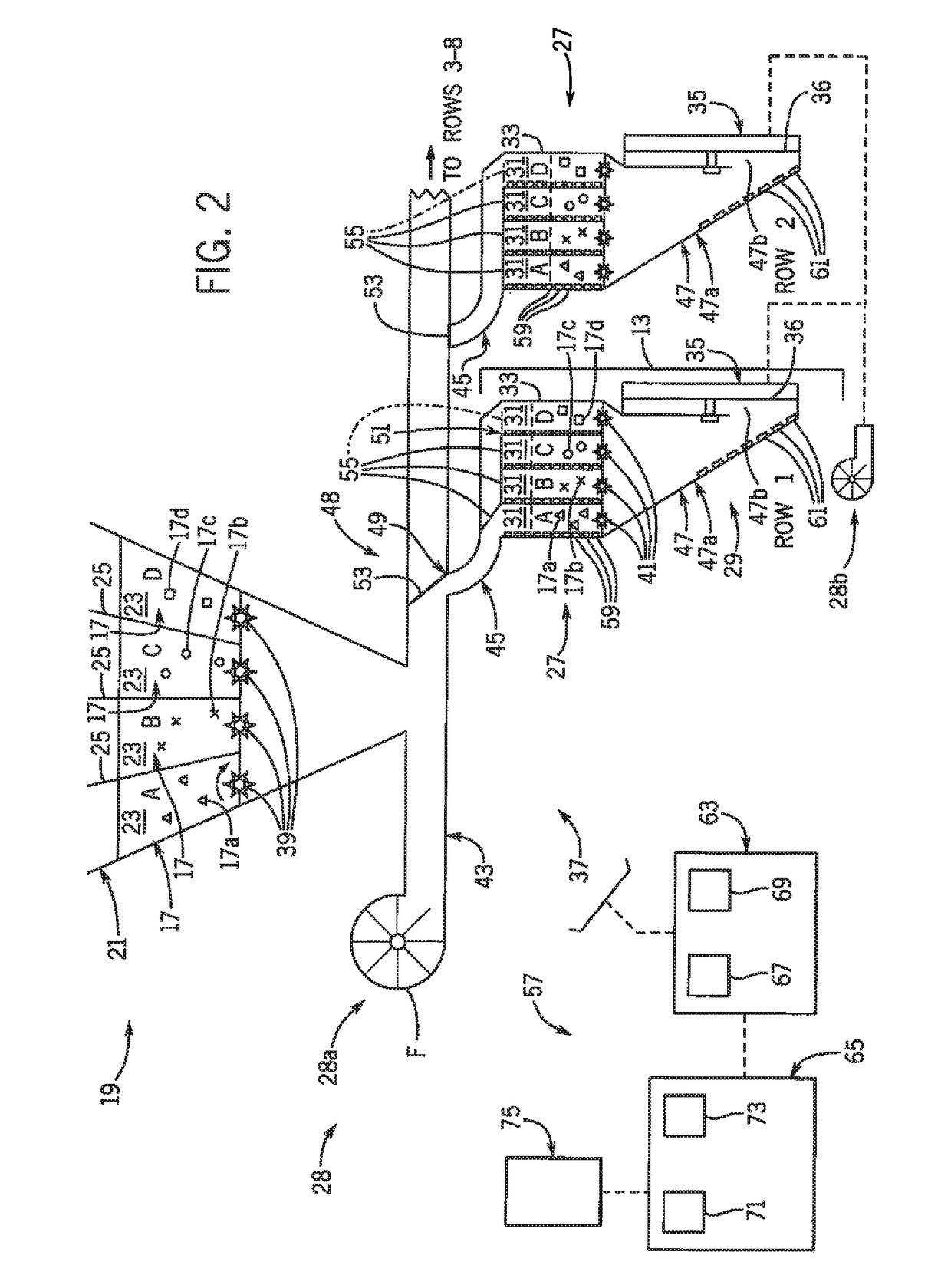Multiple seed-type planting system with charging system
a charging system and multi-type technology, applied in the field of planters or seeders, can solve problems such as inconsistencies in field yield performan
- Summary
- Abstract
- Description
- Claims
- Application Information
AI Technical Summary
Benefits of technology
Problems solved by technology
Method used
Image
Examples
Embodiment Construction
[0042]Referring now to the drawings and specifically to FIG. 1, a planting system 5 for planting multiple types or varieties of seed and automatically switching between the types or varieties during planting in a single planting pass of seeding or row-crop planting of an agricultural field is schematically shown. System 5 includes an agricultural implement, shown here as planter 7, which may be one of the EARLY RISER® series planters available from Case IH and is typically pulled by a traction device such as a tractor 9. A frame 11 of the planter 7 supports multiple row units 13 that are substantially identical. Each row unit 13 includes various support, metering, and ground-engaging components. These may include a sub-frame that is connected to the frame 11 of the planter 7 by way of a parallel linkage system and furrow opening and closing mechanisms toward front and back ends of the row unit 13. The opening and closing mechanisms may include opener disks and closing disks, respect...
PUM
 Login to View More
Login to View More Abstract
Description
Claims
Application Information
 Login to View More
Login to View More - R&D
- Intellectual Property
- Life Sciences
- Materials
- Tech Scout
- Unparalleled Data Quality
- Higher Quality Content
- 60% Fewer Hallucinations
Browse by: Latest US Patents, China's latest patents, Technical Efficacy Thesaurus, Application Domain, Technology Topic, Popular Technical Reports.
© 2025 PatSnap. All rights reserved.Legal|Privacy policy|Modern Slavery Act Transparency Statement|Sitemap|About US| Contact US: help@patsnap.com



